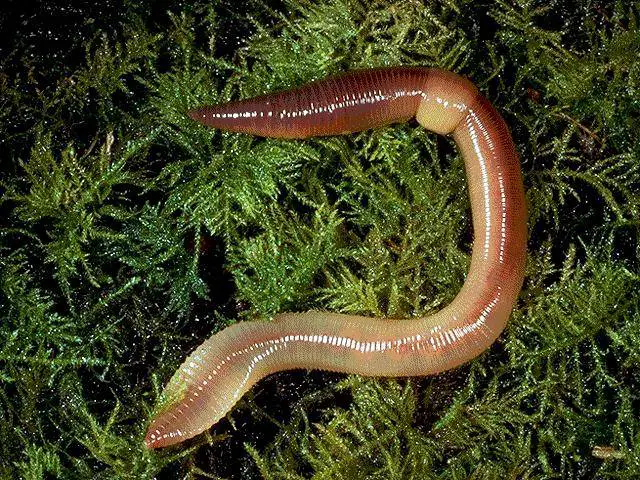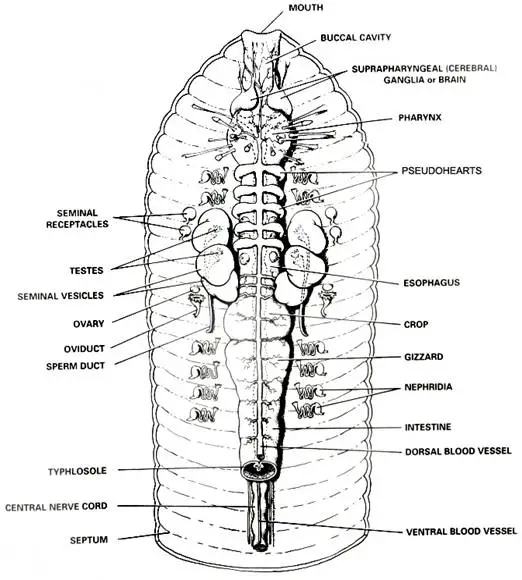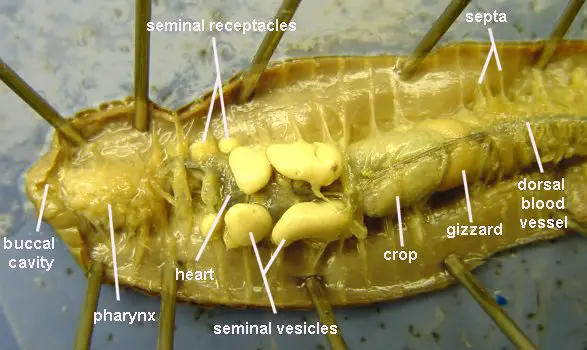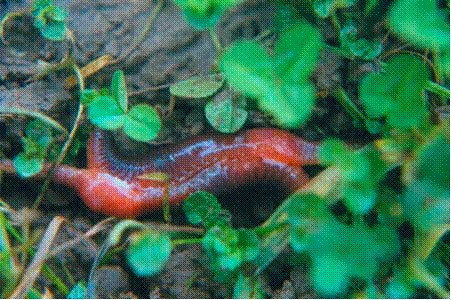Real Unknown Facts Of Earthworms
You might think scientists know everything there is to know about earthworms. After all, how hard could it be to study a creature that you can dig up in almost any backyard?
But there's a lot you probably don't know about earthworms and a lot even the scientists don't know — and you might be able to help them find out more.
Let's start with this: Did you know that there's more than one species of earthworm? The species fall into three groups that live in different parts of the soil and have different feeding habits. Here's another fact that might surprise you more: Chances are, that earthworm you dig up in your garden is actually an invasive species.
Earthworm Invaders
When we think of invasive species we often think of competition among similar creatures — one fish or birdtaking over the habitat of another fish or bird. But as with every other invasive species, introducing worms to an ecosystem that developed without them has an effect on everything that lives there.
Non-native earthworms have been in North America for a couple hundred years, brought over from Europe with soils and plants. More recently, Asian species, sold as fishing bait and for composting, have started to spread. "They have such voracious appetites and can live at such high densities that they're the ones people are trying to focus attention on now," says Ryan Hueffmeier of Great Lakes Worm Watch.
This concern is very clear in the Great Lakes region, where there are no native earthworms, Hueffmeier says. "Where the glaciers came down and scraped everything down to bedrock, the ecosystems developed earthworm-free."
We think of soil as just dirt, but there's actually quite a complicated ecosystem under our feet, so any new species can upset the balance. In these earthworm-free forests, when leaves fall onto the forest floor and plants and animals die, they build up into what's called the duff layer. "In this area, it was just fungus and bacteria that broke down the organic material for plants to consume and take up," Hueffmeier says. "Earthworms come in, they do their job and do it extremely well — they take that forest floor and convert it into the rich black soil you find in your garden."
That sounds great — but the local plants and animals in the Great Lakes region evolved to live with the duff layer, not in the rich soil associated with earthworms. In addition, the excess nutrients left by earthworms can wash out in a heavy rain, causing problems similar to fertilizer runoff. The differently textured soil is an issue as well. "There's a mat of fine roots in that duff layer — that's where a lot of our native plants put their root system," Hueffmeier says. "When that duff is gone, it's a lot harder for them to put their roots into the mineral soil."
Working Against the Natural Order
One important plant, the sugar maple, is a good example of the changes wrought by earthworms. "When you go to an earthworm-free sugar maple stand, there'll be carpets of seedlings and saplings," Hueffmeier says. "Go into a heavily invaded forest and there's a sapling here, a seedling there, and they don't look healthy. It's not that they can't grow — they do, but their density and success rate goes down."
Earthworm-free forests aren't the only places where non-native earthworms are a concern.
In Kansas, Bruce Snyder of Kansas State University says that he's mostly finding them where natives have already been driven out by soil disturbance via development, or where the frequency of prairie fires has been altered by ranchers using controlled burns to encourage grass. But just because they're not competing with native earthworms doesn't mean they're not competing with other native creatures and potentially changing the balance, as Snyder knows from his work elsewhere.
"I did my Ph.D. dissertation on an invasive earthworm moving into the Great Smoky Mountains National Park," Snyder says. "The other things I worked on were millipedes. These earthworms weren't affecting native earthworms much, but they were having a big impact on the number of individual millipedes and the number of millipede species."
He says that earthworms can also change the way an ecosystem functions by altering the way carbon and nitrogen cycle through the system. "It's hard to see, but it can be a big problem. Changes like that can cascade to things like the plant community."
Simple Ways to Save the Soil
So, how can you help stop the spread of invasive earthworms? If you fish, don't dump your leftover bait in the water — it won't drown, and it's most likely a non-native species. If you buy worms for composting, which are increasingly the Asian type, keep them contained, and don't use the soil itself — use compost tea as a fertilizer. Even sifting the soil carefully isn't enough. "There's going to be eggs, cocoons, baby worms — they are super tough to find," Snyder says. "You're going to miss some."
Snyder adds that there is still a lot we don't know about these creatures living right beneath our feet — so much so that even undergraduate research projects can turn into scientific publications. But you don't have to be a scientist to get involved: Great Lakes Worm Watch gives average people a way to contribute by teaching them to identify different species of earthworms. Contact them to find out how you can help collect information on where these worms occur. Although the project concentrates on the Great Lakes area, Hueffmeier says he'll take data from anywhere in the country.
-------------------------------------------------------------------------------------------------------------------------------------------------------------------
Earthworm Dissection
Pictures: Modern Biology, HoltThe following is a classification of a species in the earthworm family Lumbricidae. This common species is Lumbricus terrestris also known as the night crawler or dew worm.
Phylum -
Class - Family - Genus - Species - | Annelida Oligochaeta Lumbricidae Lumbricus terrestris |
Objectives:• Describe the appearance of various organs found in the earthworm.
• Name the organs that make up various systems of the earthworm.
• Name the organs that make up various systems of the earthworm.
Materials:
Safety goggles, dissecting pins, gloves, forceps, lab apron, scissors, paper towel, scalpel, water, dissecting probe, preserved earthworm, hand lens, dissection tray.
Safety goggles, dissecting pins, gloves, forceps, lab apron, scissors, paper towel, scalpel, water, dissecting probe, preserved earthworm, hand lens, dissection tray.
Purpose:
In this lab, you will dissect an earthworm in order to observe the external and internal structures of earthworm anatomy.
In this lab, you will dissect an earthworm in order to observe the external and internal structures of earthworm anatomy.
Background:
Among the most familiar invertebrate animals are the earthworms, members of the phylum Annelida. The word annelida means "ringed" and refers to a series of rings or segments that make up the bodies of the members of this phylum. Internally, septa, or dividing walls, are located between the segments. External segments are called metameres. There may be more than 100 segments in an adult worm. The clitellum is a swelling of the body found in sexually mature worms and is active in the formation of an egg capsule, or cocoon. Eggs are produced in the ovaries and pass out of the body through female genital pores. Sperm are produced in the testes and pass out through tiny male genital pores. During mating, sperm from one worm travel along the sperm grooves to the seminal receptacles of another worm. Fertilization of the eggs takes place outside the body as the cocoon moves forward over the body, picking up the eggs of one worm and the sperm of its mate. The pumping organs of the circulatory system are five aortic arches. Circulatory fluids travel from the arches through the ventral blood vessel to capillary beds in the body. The fluids then collect in the dorsal blood vessel and reenter the aortic arches. The earthworm takes in a mixture of soil and organic matter through its mouth, which is the beginning of the digestive tract. The mixture enters the pharynx, which is located in segments 1–6. The esophagus, in segments 6–13, acts as a passageway between the pharynx and the crop. The crop stores food temporarily. The mixture that the earthworm ingests is ground up in the gizzard. In the intestine, which extends over two-thirds of the body length, digestion and absorption take place. Soil particles and undigested organic matter pass out of the worm through the rectum and anus. The nervous system consists of the ventral nerve cord, which travels the length of the worm on the ventral side, and a series of ganglia, which are masses of tissue containing many nerve cells. The nerve collar surrounds the pharynx and consists of ganglia above and below the pharynx. Nervous impulses are responsible for movement and responses to stimuli. Each segment contains an enlargement, or ganglion, along the ventral nerve cord. Excretory functions are carried on by nephridia, which are found in pairs in each body segment. They appear as tiny white fibers on the dorsal body wall. The earthworm has no gills or lungs. Gases are exchanged between the circulatory system and the environment through the moist skin.
Among the most familiar invertebrate animals are the earthworms, members of the phylum Annelida. The word annelida means "ringed" and refers to a series of rings or segments that make up the bodies of the members of this phylum. Internally, septa, or dividing walls, are located between the segments. External segments are called metameres. There may be more than 100 segments in an adult worm. The clitellum is a swelling of the body found in sexually mature worms and is active in the formation of an egg capsule, or cocoon. Eggs are produced in the ovaries and pass out of the body through female genital pores. Sperm are produced in the testes and pass out through tiny male genital pores. During mating, sperm from one worm travel along the sperm grooves to the seminal receptacles of another worm. Fertilization of the eggs takes place outside the body as the cocoon moves forward over the body, picking up the eggs of one worm and the sperm of its mate. The pumping organs of the circulatory system are five aortic arches. Circulatory fluids travel from the arches through the ventral blood vessel to capillary beds in the body. The fluids then collect in the dorsal blood vessel and reenter the aortic arches. The earthworm takes in a mixture of soil and organic matter through its mouth, which is the beginning of the digestive tract. The mixture enters the pharynx, which is located in segments 1–6. The esophagus, in segments 6–13, acts as a passageway between the pharynx and the crop. The crop stores food temporarily. The mixture that the earthworm ingests is ground up in the gizzard. In the intestine, which extends over two-thirds of the body length, digestion and absorption take place. Soil particles and undigested organic matter pass out of the worm through the rectum and anus. The nervous system consists of the ventral nerve cord, which travels the length of the worm on the ventral side, and a series of ganglia, which are masses of tissue containing many nerve cells. The nerve collar surrounds the pharynx and consists of ganglia above and below the pharynx. Nervous impulses are responsible for movement and responses to stimuli. Each segment contains an enlargement, or ganglion, along the ventral nerve cord. Excretory functions are carried on by nephridia, which are found in pairs in each body segment. They appear as tiny white fibers on the dorsal body wall. The earthworm has no gills or lungs. Gases are exchanged between the circulatory system and the environment through the moist skin.

Procedure:
External Anatomy
1. Put on safety goggles, gloves, and a lab apron.
1. Put on safety goggles, gloves, and a lab apron.
2. Place earthworm in the dissecting tray & rinse off the excess preservative. Identify the dorsal side, which is the worm’s rounded top, and the ventral side, which is its flattened bottom. Turn the worm ventral side up, as shown in the diagram below.

3. Use a hand lens as you observe all parts of the worm, externally and internally. Locate the conspicuous clitellum, a saddle-like swelling on the dorsal surface. The clitellum produces a mucus sheath used to surround the worms during mating and is responsible for making the cocoon within which fertilized eggs are deposited. The anterior of the animal is more cylindrical than the flattened posterior and is the closest to the clitellum. The ventral surface of the earthworm is usually a lighter colour than the dorsal surface. The mouth is located on the ventral surface of the first segment while the anus is found at the end of the last segment. Find the anterior end by locating the prostomium (lip), which is a fleshy lobe that extends over the mouth. The other end of the worm’s body is the posterior end, where the anus is located.

4. Locate the clitellum, which extends from segment 33 to segment 37. Look for the worm’s setae, which are the minute bristle-like spines located on every segment except the first and last one. Run your fingers over the ventral surface of the earthworm’s body. You should be able to feel bristle-like setae used for locomotion
5. Refer again to the diagram of the ventral view of the worm to locate and identify the external parts of its reproductive system. Find the pair of sperm grooves that extend from the clitellum to about segment 15, where one pair of male genital pores is located. Look also for one pair of female genital pores on segment 14. There is another pair of male genital pores on about segment 26. Try to find the two pairs of openings of the seminal receptacles on segment 10. Note: These openings are not easy to see.
Internal Anatomy
Hint: Position your preserved earthworm dorsal side up and pin it down through the first segment and then again further back behind the clitellum. Cut a slit in the dorsal surface near the posterior pin. Using fine scissors extend the cut forward to the first segment. Be careful not to cut too deep. Starting at the first segment, cut the septa (thin membranes) that internally divide the segments, so the skin can be laid flat. Use additional pins to hold the integument open and expose the organs. Continue to lay the skin back until you have uncovered a centimeter or so of the intestine.
6. Turn the worm dorsal side up. Using a scalpel and scissors, make a shallow incision in the dorsal side of the clitellum at segment 33. CAUTION: Scalpels and scissors are very sharp. Report any cuts to your teacher. Using the forceps and scalpel, spread the incision open, little by little. Separate each septum from the central tube using a dissecting needle, and pin down each loosened bit of skin. Continue the incision forward to segment 1.
7. Use the diagram below to locate and identify the five pairs of aortic arches, or hearts. Then find the dorsal blood vessel. Look for smaller blood vessels that branch from the dorsal blood vessel.




Digestive System
The earthworm is an example of a foraging herbivorous annelid, obtaining food by eating its way through the soil and extracting nutrients from the soil as it passes through the digestive tract.
Hint: Starting at the anterior end, locate the muscular pharynx (food ingestion). This is followed by a tube-like esophagus which terminates in a crop (the wider organ) which serves as a storage stomach. Posterior to the crop you will find the gizzard. Gently press on the crop and gizzard to test their firmness. While the crop is soft and thin, the gizzard is muscular (soil is ground up and churned within the gizzard). The gizzard is followed by a long intestine in which both digestion and absorption occur. Undigested material is voided through the anus.
8. Locate the digestive tract, which lies below the dorsal blood vessel. Refer to the diagram above to locate the pharynx, esophagus, crop, gizzard, and intestine.

9. To find organs of the nervous system, push aside the digestive and circulatory system organs. Use the diagram below to locate the ventral nerve cord. Trace the nerve cord forward to the nerve collar, which circles the pharynx. Find one pair of ganglia under the pharynx and another pair of ganglia above the pharynx. The ganglia above the pharynx serve as the brain of the earthworm.


10. The worm’s excretory organs are tiny nephridia. There are two in every segment. Use the preceding diagram to locate some nephridia.

11. Use the diagram below to locate and identify a pair of ovaries in segment 13. Look for two pairs of tiny testes in segments 10 and 11. To find these organs, you will again have to push aside some parts already dissected.



12. Dispose of your materials according to the directions from your teacher.
13. Clean up your work area and wash your hands before leaving the lab.
0 comments:
Post a Comment